

EXPLORE BY TOPIC:
  Our top 10 resources
Our top 10 resources
  Childhood / Early Life
Childhood / Early Life
  Chronic Stress
Chronic Stress
  Education
Education
  Food Security
Food Security
  Genetics
Genetics
  Jobs & Work
Jobs & Work
  Housing / Neighborhoods
Housing / Neighborhoods
  Income & Wealth
Income & Wealth
  Race / Racism
Race / Racism
  Social Inclusion
Social Inclusion
  Policy & Change
Policy & Change





Buy the DVD
e-Newsletter
FAQs
Contact Us
Site Map
Home

|
 |


|
Background: To paraphrase the Institute of Medicine’s (IOM) 2002 report on public health: what can we as a society do to fulfill our ongoing interest in assuring the conditions for people to be healthy?
Decisions that governments and corporations make every day benefit some and burden others. Unfortunately, they often reinforce class, racial and gender inequities that contribute to unequal patterns of illness and premature death. Building a social movement that can advocate effectively for more equitable social and economic policies is critical to changing our economic, physical and social environments so that they promote rather than threaten our health.
In other words, tackling health inequities is unavoidably a matter of politics; of engaging in struggles over how we want our government to allocate resources, regulate corporate power, and implement the principles of democracy.
Tony Iton, MD, director of the Alameda County Public Health Department in California, points out that social policies that produce and reproduce class and racial inequality have, over time, “taken many forms, including racially restrictive covenants on property, economic redlining in banking practices, school segregation, [unfair] housing and urban renewal policies, disinvestment in public transportation, discriminatory zoning practices, law enforcement racial profiling, [discriminatory] incarceration policies, and other deliberate governmental policies and practices.”
But we’ve also made many changes during the last century that have improved health equity by improving peoples’ lives: the eight-hour work day, universal public high school, the right to collective bargaining, social security, civil rights, environmental standards... There’s no reason why we can’t do so again.
Opportunities for change abound. Iton and others suggest a wide range of tangible policy options, including quality universal preschool, improved public school funding, living wage laws, affordable housing, land use and zoning reform, improved public transit, fair immigration policies, criminal justice reform, and, of course, full employment, fair trade and even progressive tax policy.
Some of these policy changes will be driven locally, some on the state level, others on the federal level. In general, they fall within three categories:
• Tackling inequality and improving living standards. These policies aim to close the gap between the rich and the rest of us, and between white people and people of color, such as living wage jobs, more equitable tax policy, affirmative action and family supports.
• Protecting those at the bottom of the pyramid. These policies protect under-resourced households and communities from health threats posed by the chaos and uncertainty of free markets. They promote not only additional programs and services, but more equitable allocation of public resources through needed social investments (such as quality schools, affordable housing, and public transit) so that the means for achievement are more available to those with fewer individual resources.
• Reforming decision-making. These policies aim to open and democratize decision-making processes that too often are dominated by concentrated economic and political power. Successful policy change depends more than anything else on those most affected by injustice working together to set priorities, generate solutions, make their voices heard, and to organize effectively to hold government accountable.
How does one advance “health in all policies”? How can local, state and national public policy action in support of health equity be brought about? What is the legislative agenda? What are the policy and program levers? What does this imply for organizations’ own strategies and structures? How do engaged groups communicate with each other and so avoid having to climb the same learning curve over and over again? How can a comprehensive and sustained health equity focus and movement best be built? Can these initiatives be brought together under one health equity national strategy, umbrella or coalition? Should they?
The articles and media in this “policy and change” section address some of the policies and strategies tackling patterns of advantage and deprivation, of hope and despair, and of health and illness.

|
|
|
| |
|
Policy & Change: 0 items found |
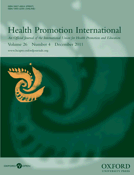 The Political Economy of Health Promotion: Part 2 - National Provision of the Prerequisites of Health The Political Economy of Health Promotion: Part 2 - National Provision of the Prerequisites of Health 
ARTICLE by Dennis Raphael, Health Promotion International, Dec 2011 Part 2 of two-part article published in Dec 2011 issue of Health Promotion International. Part 2 of this article documents the extent to which public policy activity that provides the prerequisites of health through public policy action differs among varying welfare state regimes. |
 |
 The Politics of Population Health The Politics of Population Health 
VIDEO PRESENTATION, Dennis Raphael, York University, January 20, 2006 This 45 minute lecture attempts to answer the question of why so little is done to address the social determinants of health when so much is known of their importance. Raphael posits that this inaction is largely due to the fact that the social determinants of health are themselves determined by policy decisions, and explores the politics behind these decisions. |
 |
 The Poor Get Diabetes, the Rich Get Local and Organic The Poor Get Diabetes, the Rich Get Local and Organic 
ARTICLE by Mark Winne In this excerpt from his new book, Closing the Food Gap: Resetting the Table in the Land of Plenty, Mark Winne explains a growing split in the diets of the haves and have-nots; at the same time that the wealthy are coming to prefer organic and locally-grown foods, the poor have been losing geographical and economic access to healthy options. He also reports on a survey by the non-profit group Hartford Food System, which found that low-income consumers in the area would prefer to purchase organics and fresh foods, but simply couldn't access or afford them. |
 |
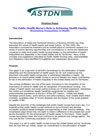 The Public Health Nurse's Role in Achieving Health Equity: Eliminating Inequalities in Health (pdf) The Public Health Nurse's Role in Achieving Health Equity: Eliminating Inequalities in Health (pdf) 
GUIDELINES from the Association of State and Territorial Directors of Nursing (ASTDN), 2008 This paper is an outgrowth of ASTDN’s commitment to the elimination of health disparities and the achievement of health equity for all, and underscores the important role public health nurses play in eliminating inequities in health. Its purpose is to inspire public health nurses to serve as leaders and major contributing forces in the elimination of health inequities in the United States and its Territories. |
 |
 The Questionable Contribution of Medical Measures to the Decline of Mortality in the United States in the Twentieth Century The Questionable Contribution of Medical Measures to the Decline of Mortality in the United States in the Twentieth Century 
SCHOLARLY ARTICLE, The Milbank Memorial Fund Quarterly. Health and Society, 1977 This article makes the case that social reforms, not improvements in medical technology, have been largely responsible for the major improvements in population health over the past century. "Legislators, practitioners, and the public may deem it "heretical," but analysis of United States data shows that introduction of specific medical measures and expansion of services account for only a fraction of the decline in mortality since 1900. Even acknowledging that "mortality" and "health" are not synonymous, analysis of age- and sex-adjusted rates still suggests important trends and generates hypotheses for informed social action."
Available online by JSTOR subscription or purchase only. |
 |
 The State of Society: Measuring Economic Success and Human Well-Being The State of Society: Measuring Economic Success and Human Well-Being 
Erwin de Leon and Elizabeth T. Boris In this study, the authors provide an overview of a broad range of existing measures that go beyond gross domestic product (GDP) to offer a more complete and accurate picture of how a society and its economy are faring. Particular attention is given to data still generally marginalized on the economic and social status of the majority of every society—women and children—and to how this correlates with both a nation’s quality of life and its economic success. Based on a review of the literature and an analysis of major arguments and rationales for moving beyond GDP as a measure of national well-being, this report identifies 14 categories of national well-being. It synthesizes hundreds of indicators found in 28 reports1 that present alternative indices and systems of well-being into 79 indicators. |
 |
 The State of Working America 2006/2007 The State of Working America 2006/2007 
REPORT by Mishel, Bernstein, and Allegretto, Cornell University Press and the Economic Policy Institute, 2007 Prepared biennially since 1988, EPI's flagship publication sums up the problems and challenges facing American working families, presenting a wide variety of data on family incomes, taxes, wages, unemployment, wealth, and poverty — data that enables the book's authors to closely examine the impact of the economy on the living standards of the American people. The State of Working America 2006/2007 is an exhaustive reference work that will be welcomed by anyone eager for a comprehensive portrait of the economic well-being of the nation. |
 |
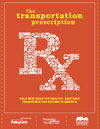 The Transportation Prescription: Bold New Ideas for Healthy, Equitable Transportation Reform in America (pdf) The Transportation Prescription: Bold New Ideas for Healthy, Equitable Transportation Reform in America (pdf) 
REPORT from PolicyLink, Prevention Institute, and the Convergence Partnership, 2009
This report synthesizes the insights and recommendations of a group of leading academic researchers and advocates working at the panerai replica intersection of transportation policy, equity, and public health identify opportunities for creating transportation systems that promote health and equity.
|
 |
 The Work, Family, and Equity Index: How Does the United States Measure Up? The Work, Family, and Equity Index: How Does the United States Measure Up? 
REPORT by The Project on Global Working Families, 2007 The Work, Family, and Equity Index has been developed to measure governmental performance around the world in meeting the needs of working families in general and and low- and middle-income working families in particular. The policies used to comprise the index have achieved widespread recognition based on the weight of the research evidence or consensus in global policy and international agreements. |
 |
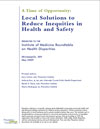 Time of Opportunity: Local Solutions to Prevent Inequities in Health and Safety (pdf) Time of Opportunity: Local Solutions to Prevent Inequities in Health and Safety (pdf) 
REPORT by Dr. Anthony Iton of the Alameda County Public Health Department and Larry Cohen, Rachel A. Davis and Sharon Rodriguez of Prevention Institute This 2009 report prepared for presentation to the Institute of Medicine Roundtable on Health Disparities presents 32 recommendations for strengthening communities, improving quality health care access, developing our health system, and supporting local efforts.
|
 |
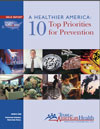 Top Ten Priorities for Prevention Top Ten Priorities for Prevention 
ISSUE REPORT, Trust for America's Health TFAH has identified 10 key policy areas where government action could improve the health of the U.S. population and lower the costs associated with treating people after they're already sick:
- Promoting Disease Prevention
- Combating the Obesity Epidemic
- Preventing Tobacco Use and Exposure
- Preventing and Controlling Infectious Diseases
- Preparing for Potential Health Emergencies and Bioterrorism Attacks
- Recognizing the Relationship Between Health and U.S. Economic Competitiveness
- Safeguarding the Nation's Food Supply
- Planning for Changing Health Care Needs of Seniors
- Improving the Health of Low-Income and Minority Communities
- Reducing Environmental Threats
And a crosscutting recommendation for:
- Holding Government Accountable for Protecting the Health of Americans
|
 |
 Urban Settings (pdf) Urban Settings (pdf) 
REPORT from the WHO Commission on the Social Determinants of Health, 2007
Focuses on urbanizations, particularly broad policy interventions related to healthy urbanization, and closely examines slum upgrading.
This is an interim report, submitted by the Urban Settings Knowledge Network to develop the Commission's final report in May 2008.
|
 |
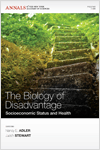 Using team science to address health disparities: MacArthur network as case example Using team science to address health disparities: MacArthur network as case example 
Nancy E. Adler and Judith Stewart In this paper, the director and the administrator of the MacArthur Network on Socioeconomic Status and Health reflect on the evolution of the network. Against the backdrop of the science of “team science,” they describe the history and process of the network including the forging of a group agenda, the development of a creative, productive group working style, and the outcomes arising from these processes. |
 |
 WakeUpWalMart.com WakeUpWalMart.com 
WEB SITE of "America's Campaign to Change WalMart" Wal-Mart is America's largest employer, yet pays poverty level wages, leaves over 775,000 of its workers without company health care, faces the largest gender discrimination lawsuit in the country, shuts down small businesses and helps ship jobs overseas. This campaign to change Wal-Mart is "a fight for what kind of America we want to live in. In our America, people come first. Multi-billion dollar corporations shouldn't be able to hide behind their special interest lobbyists and billion dollar ad campaigns. That is why we are building the largest grassroots campaign to change a corporation in history. By changing Wal-Mart, we improve people's lives, help our community and build a better America."klock kopior |
 |
 What the Federal Government Can Do About the Nonmedical Determinants of Health What the Federal Government Can Do About the Nonmedical Determinants of Health 
SCHOLARLY ARTICLE, Nicole Lurie MD, Health Affairs, 2002 Growing recognition that the acute health care delivery system contributes proportionally less to health when compared with environment and behavior has focused scholars and public health experts on the need to address nonmedical determinants of health. This paper outlines some steps that the U.S. government can take to address these factors and describes some of the challenges involved. Actions that can be undertaken now are increased education and leadership,development of mechanisms to further collaboration among sectors,expanded monitoring and reporting on nonmedical determinants, and developing new knowledge about how these factors affect health and successful interventions to address them. |
 |
 What's the Economy for, Anyway? What's the Economy for, Anyway? 
ESSAY by John de Graaf
De Graaf, filmmaker, author, and national coordinator of the Take Back Your Time campaign, questions the heavy focus in the U.S. during recent decades on increasing GDP at the expense of our health and overall quality of life.
|
 |
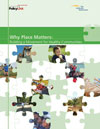 Why Place Matters: Building a Movement for Healthy Communities (pdf) Why Place Matters: Building a Movement for Healthy Communities (pdf) 
REPORT by J. Bell and V. Rubin, PolicyLink.org This report explains the framework of place (economic, social, physical, and service environments) to understand the relationship between community conditions and health, analyzes the connections among all the environmental factors that contribute to a healthy community, and identifies environmental effects on community health. |
 |
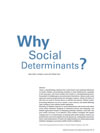 Why Social Determinants? Why Social Determinants? 
Healthcare Quarterly There is overwhelming evidence that social factors have profound influences on health. Children are particularly sensitive to social determinants, especially in the early years. Mounting an effective response to social determinants will involve both direct social policy initiatives designed to eliminate poverty and inequality, and indirect approaches focused on disrupting pathways between social risks and poor health outcomes. To be effective, these indirect strategies will require nothing short of a transformation of existing child health systems. Parents and professionals must work together from the ground up, raising public awareness about social determinants of health and implementing cross-sector place-based initiatives designed to promote positive health in childhood. |
 |
| « Prev 1 | 2 | 3 | 4 | 5 | 6 |
|




